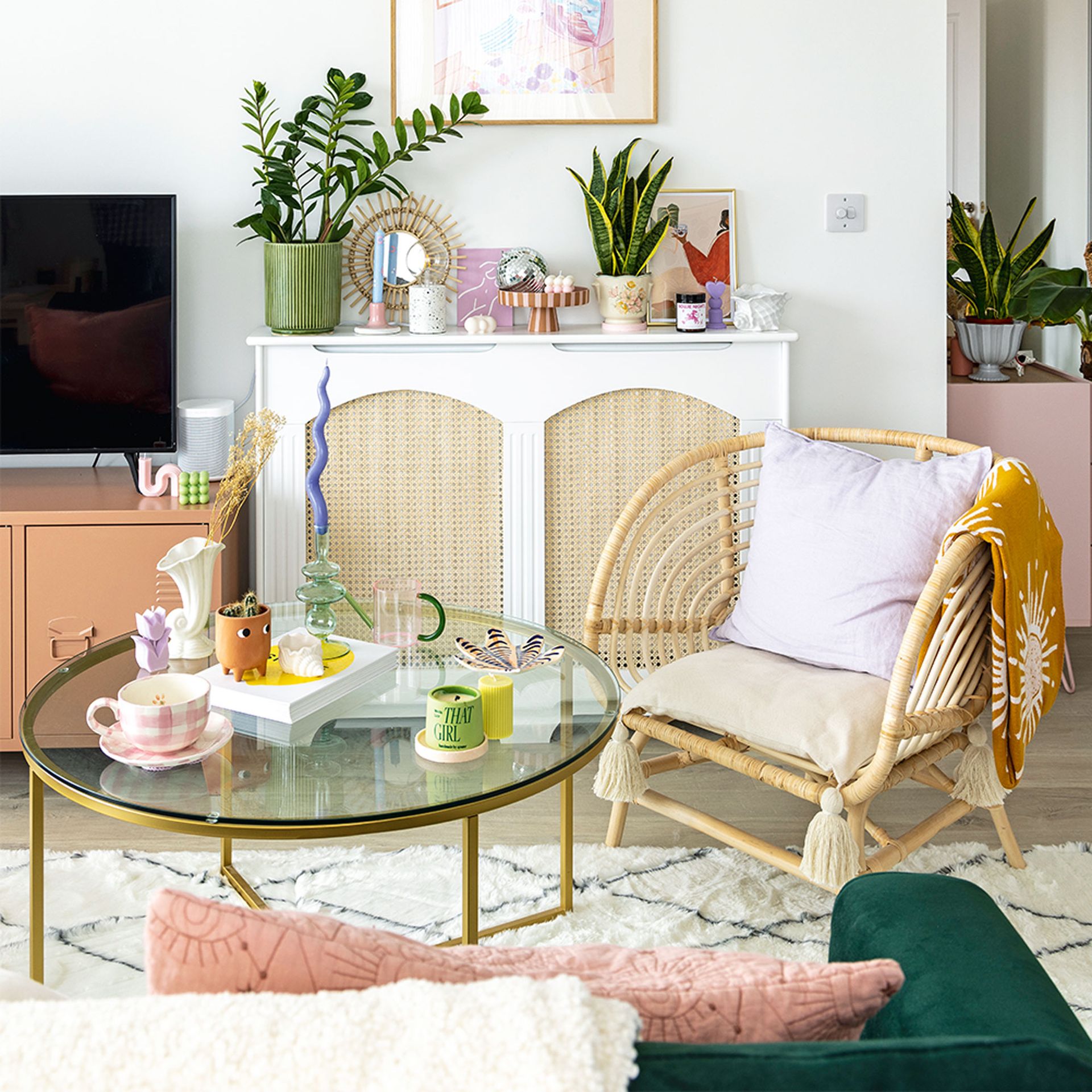Is your radiator not heating up? Why it happens and how to fix the problem asap
Make sure your radiators are pulling their weight this winter


It’s safe to say that it’s a little chilly right now, and we're all feeling a pinch to finally turn the heating on. But there’s nothing worse than firing up the boiler to realise that your radiators aren’t heating up.
So you’ve finally flicked the switch on your central heating, and are ready to face the energy bills and nothing happens...It's not uncommon for radiators after a period of inactivity to need a little extra push to get started again to keep your house warm this winter.
We’ve outlined some of the most common reasons your radiator isn't heating up and how you can fix that quickly.
Why is my radiator not heating up?
To understand why your radiator isn’t heating up, you first need to determine whether it’s an isolated problem or whether every radiator in your house is kaput. If it’s the latter, it’s highly likely that you have a bigger boiler problem that requires the assistance of a gas-safe heating engineer. But if it’s the former, you should be able to do the investigations yourself.

1. You have a pocket of air in your radiator
If you’re wondering why your radiator isn’t heating up, there’s a chance that you could be dealing with a trapped pocket of air. This is arguably the most common problem homeowners face - especially when they turn their heating back on after the summer months.
Most of the time, an air pocket won’t leave a radiator completely cold, but it will normally result in a radiator that’s warm at the bottom while still cold at the top.
Thankfully, it’s very easy to fix this problem. Brett Cullen, Head of Content and Brand at Plumbworld says, ‘This can be solved by performing a radiator bleed once a year when the weather starts to cool down, generally in autumn, so now would be a good time!’
How to bleed a radiator, is a job that can be done in about 10 minutes, all you need is a radiator key which you use to open the radiator valve and release the trapped air. After bleeding, your radiator should be as good as new.
2. You have a sludge or debris build up
Over time, your central heating system can play host to all kinds of debris, including dirt and sludge. And as it won’t remove itself, you need to take charge and remove it from your radiators instead.
You’ll know when you need to flush your radiator, as you’ll find that the tops of your radiators will heat up while the bottom of the radiator will stay cold. That’s because the heat can’t bypass the layer of sludge build-up that’s sitting at the bottom.
You can learn how to flush a radiator yourself, but it is a slightly more involved process than bleeding a radiator. You will need to completely drain the radiator, remove it from the wall and flush out the remaining debris before reinstalling it.

3. You have a radiator leak
Unfortunately for us (but fortunately for plumbers), pipes and valves aren’t invincible. And while radiator pipes normally last around 80 years, that doesn’t stop the pipes and valves from springing a leak or seizing up every so often.
If you have a leak, you’ll find that the whole radiator is cold, and no warmth is coming through at all. And if this leak is near your thermostat valve pipe joint, it’s highly likely that it’s come loose and requires some tightening with an adjustable spanner.
However, sometimes, the leak may be coming from the radiator gland. If that’s the case, wrapping some plumber’s tape around the spindle should do the trick.

4. Your thermostatic valve is turned off
Sometimes, the answer to ‘Why is my radiator not heating up?’ is a simple one. That’s because many people choose to turn down the thermostatic valve on their individual radiators throughout the year - and even throughout winter. Normally, this is because a room is not in use.
But if your radiator isn’t heating up, it’s a good idea to check that this valve is actually on. Plumbing expert Brian Griffiths at HomeAdviceGuide.com explains, ‘This control valve can usually be found at the bottom of your radiator, where the pipe meets your radiator. It will have numbers or symbols on it, indicating the temperature level from cold to hot. If it’s switched to a snowflake symbol or a low number, turn it up.’

FAQs
Why is my radiator not getting hot?
There are three potential reasons why your radiator isn’t getting hot. It may be that you have a leak, it may be that your radiator has a blockage, or it may be that you have a pocket of air preventing your radiator from getting hot.
Thankfully, all of these problems can be fixed with regular maintenance - including flushing and bleeding. But it’s also important to understand the problem at hand.
If just one of your radiators isn’t heating up, you can fix it yourself. But if all of your radiators are stone cold, there’s a high chance that you have a bigger problem that requires the help of a professional.
Why is my radiator not heating up despite being bled?
If you’ve bled your radiator but find that it’s still cold, a pocket of air in your radiator probably wasn’t your only problem. It may be that your radiator needs to be flushed to remove any lingering debris sitting at the bottom of the radiator, or it may be that you have a leak in the valve or pipes.
These are fairly easy fixes that you can do yourself. So, we’d always suggest trying these at home to fix your radiator once and for all. But if this doesn’t work, you may need to call a local and reliable plumber to help you out.
Now it's time to shed that extra jumper and restore your radiators to their former glory.
Get the Ideal Home Newsletter
Sign up to our newsletter for style and decor inspiration, house makeovers, project advice and more.

Lauren Bradbury is a freelance writer and major homes enthusiast. She graduated with a Bachelor’s degree in English and Creative Writing from the University of Chichester in 2016, before dipping her toe into the world of content writing. After years of agency work, writing everything from real-life stories to holiday round-ups, she decided to take the plunge and become a full-time freelancer in the online magazine world. Since then, she has become a regular contributor for Real Homes and Ideal Home, and become even more obsessed with everything interior and garden related. As a result, she’s in the process of transforming her old Victorian terraced house into an eclectic and modern home that hits visitors with personality as soon as they walk through the door.
-
 This stunning green kitchen is packed with genius small-space design ideas that can be reused in the future
This stunning green kitchen is packed with genius small-space design ideas that can be reused in the futureAnd the best part is that each part can be repurposed
By Laurie Davidson
-
 This compact room has been transformed into a luxurious guest bedroom that proves size doesn't matter
This compact room has been transformed into a luxurious guest bedroom that proves size doesn't matterThe compact layout didn't deter this homeowner, who created a beautiful spare bedroom that's both homely and cosy
By Laurie Davidson
-
 Planning bathroom lighting – our expert guide to achieving lighting perfection
Planning bathroom lighting – our expert guide to achieving lighting perfectionTransform your bathroom into a spa-like sanctuary with step-by-step assistance from design pros
By Linda Clayton


